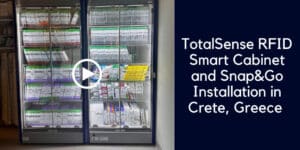What’s inside:
Snap&Go has many features that protect patients and ensure organizational compliance.
This video looks at:
- How to boost patient safety at the point of care
- New-generation data capture
- Achieving full and accurate implant tracking
- Pre-consumption safety alerts
- 3 second item capture at the point of care
- Achieving accurate charting
- Robust recall management
How to boost patient safety at the point of care
When you think about patient safety at the point of care your main thought is of the surgery itself.
However perioperative nurses play a huge role in protecting patients by ensuring that surgical utilization documentation is complete and correct.
To safeguard patients, nurses need to ensure that the patient file includes every reportable item.
This valuable record of surgery is used within the organization for many purposes.
So, let’s look at how it is traditionally carried out.
New-generation data capture
Historically, point of use data capture has become cumbersome and time consuming.
Relying on manual data entry and inefficient barcode scanning commonly results in errors and omissions.
- Keying data into the hospital system involves many screens, fields and dropdowns – for each and every item.
- Barcode scanning is often problematic due to label, scanner or system issues. Often data entry is required where not all fields were populated from the scanned label.
When these outdated systems are used, it is common for the surgery to end with implants or consumables still needing to be entered. When the EMR is not up to date at the end of surgery there is a greater risk of incorrect entries or missing items – a red flag for patient safety and so much more.
Achieving full and accurate implant tracking
UDI tracking of implants is vital in order to protect patients. The FDA’s UDI regulations require lifecycle tracking – including a vital digital link being made between patients and products.
Without this, should a future recall occur, tracking and tracing all those patients who consumed the item is time consuming and imprecise.
If the UDI tracking of stock items at the point of care is a bit ‘hit and miss’, then the UDI tracking of non-stock items is difficult on a whole other level!
Achieving accurate charting
Some of the items that often cause problems for nurses are:
- Substitute items
- Stock items with revised codes
- Trunk stock
- Just-in Time products
These items are either missing from the hospital Item Master or have updated information which no longer match the listing on the system.
Systems that rely on the Item Master are inefficient, as it is so difficult to maintain the data integrity of hundreds of thousands of items.
That’s why at IDENTI, our Snap&Go system taps into a global SKU database that is populated by pooled data from worldwide providers is the safest bet. And if the item still can’t find a match, then it’s our back office that investigates, not yours.
Nurses need to have confidence that every item used in surgery will be listed on the patient file, whether its a regular stock item or a product that just arrived straight to the OR and has no record in the system.
New technology that doesn’t rely on items being accurately pre-listed in hospital systems have a great advantage over outdated technology and are a big boost for patient safety.
Robust recall management
When full and accurate surgical records are achieved by using effective point of use data capture tools, recall management is quick and easy.
It’s just a matter of generating a system report.
No hunting through the big book. No checking different systems or manual records.
It takes seconds to generate the data you need.
Pre-consumption safety alerts
We’ve spoken about post-surgery protection via the creation of accurate product utilization records – this ensures a quick reaction when in the event of a product recall. But periop nurses can also be proactive in preventing patient risk and optimizing their wellbeing.
The point of care is the last line of defense when it comes to preventing ‘never events’ – such as accidentally using a recalled or expired product in a surgery or procedure.
Many hospitals admin that they cannot ensure 100% efficiency when it comes to removing recalled or expired products from stock. And some of these make it into the OR and procedure room. Then it’s down to the nurse to notice the issue and prevent the item being consumed.
But what if it wasn’t all down to the nurse? Snap&Go provides prompt pre-consumption alerts to protect patients and safeguard the organization from expensive litigation, bad publicity and non-compliance.
A system that is able to flag up invalid items before they are used provides an added layer of protection for all.
3 second item capture at the point of care
Surgical supply documentation has a bad reputation among nurses.
It’s often fiddly, long-winded and distracts them from patient care.
Tools fail. Systems display error codes. Items fail to load.
Switching from a manual or barcode system to image-recognition technology is a gamechanger.
It transforms item and charge capture at the point of care into a 3 second task.
Really!
Nurses constantly provide positive feedback on the benefits of using Snap&Go compared to their existing system. You can read their comments in our blog highlighting nurses’ reaction to a new POU system for data capture in the OR and procedural setting.
So that’s it. Your whirlwind tour of Snap&Go’s enhanced patient safety features.
Now it’s time to check out our 30-second video short, summarizing why Snap&Go’s got patient safety at the point of care covered.
If you want to improve patient safety at the point of care, let’s talk!






